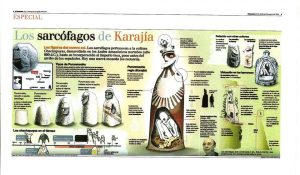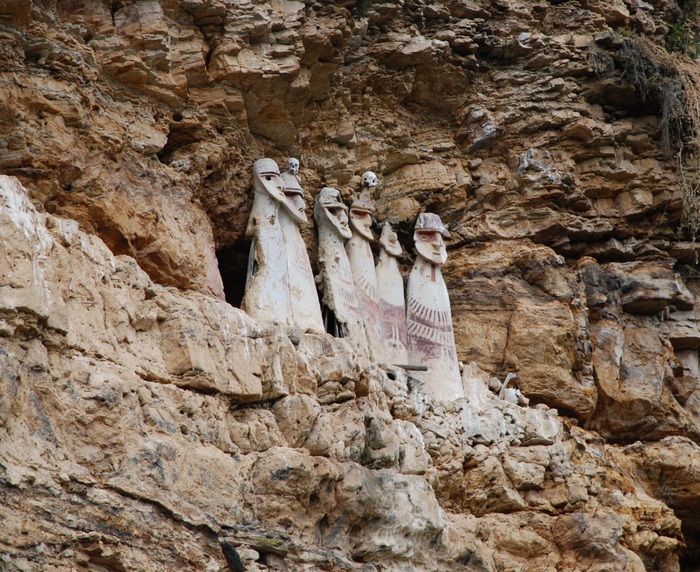 Sarcophagus of Karaj – Chachapoyas culture
Sarcophagus of Karaj – Chachapoyas culture
As explained in the previous publication last 23 March, we made a trip to the interesting Amazon Andes of northern Peru, where we could learn more about the Chachapoyas culture dels preincaica , developed between 800 i 1470, visitor Kuelap Fortress, a magnificent Archaeological Settlement.
Chachapoyas culture developed in the Andes northeast of Peru, a very uneven geographically, lush forests, with high rainfall and an almost permanent haze. Hence it says that responds Chachapoyas name means "the town of fog".
I would now like to refer to the singular funerary constructions of this culture unknown to many, sarcophagi and in particular sarcophagus Karaj that we could see in the distance, since they are located in a place inaccessible, As shown in the attached images.
The Chachapoyas gave much importance to the mortuary ritual, a ritual that manifests the important social stratification and political culture.
Certainty that had a precise technique for carrying out the process of mummification. Retired principal organs of the deceased to the body are not damaged and then treated for skin preservation, was not an easy challenge, since we are talking about a country with high humidity, due to the persistent rain and mist, Despite these difficulties mummies have been preserved in good condition.
After this delicate and painstaking work of mummification, they placed the bodies in fetal position and wrapped them in cloth, often corresponding to the face draws a picture that could be equal to the same family group, then cthey placed the bodies in the funerary structures, sarcophagi.
The sarcophagi were built from a structure of reeds and branches, who applied to the clay mixed with small branches and stones until they form suggesting the outline human, ignoring the extremities. Making compact head and upper body. At the head depicting a face molded into a semicircular aquiline nose highlighted, while the mouth and eyes are represented with a shy holes. Unless particular stands out as a sort of rounded shape crowning the head, above the eyes bear a kind of visor. The coffins are white and decorated with red paint. The coffins are to Karaj 2,5 mts high, spectacular.
After finishing, put them in upright next to each other as connected and placed in an inaccessible place, on top of a jungle ravine inside, This has led to its good state of preservation, as they have been protected from looters and wind saved the moisture existing in the area. It is believed that they were built in 1460
The funerary constructions of Chachapoyas best known and most well preserved are those of Revash, the Flask, Lagoon of the Condors i the Pinchudos.
M. Àngels Canut




